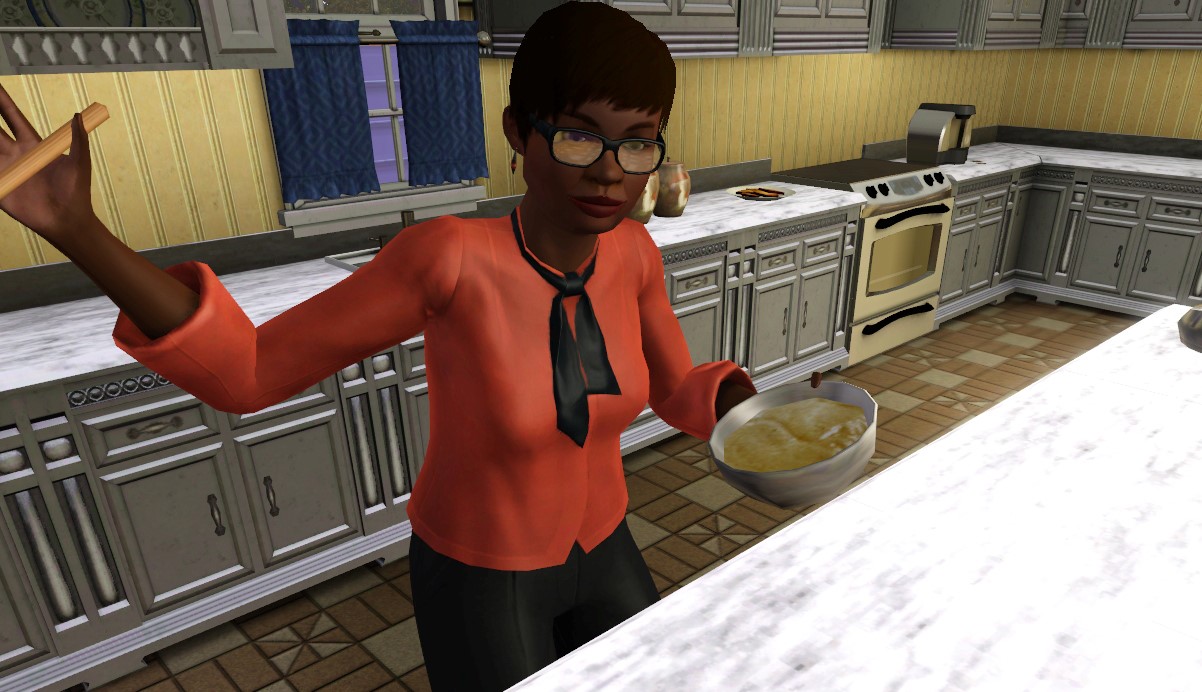Trending
Opinion: How will Project 2025 impact game developers?
The Heritage Foundation's manifesto for the possible next administration could do great harm to many, including large portions of the game development community.

| Dig in! Exploring Cooking Mechanics in Games | ||
| Every day this week, Game Developer is serving up a feast of interviews, deep dives, and more digging into the evolution of Cooking in video games. | ||
| Browse Latest Articles | Submit your Blog | |
A fond look back at video game cookbooks and the delicious dishes that inspired them, including a recipe based on The Sims 3.

Once upon a time, a thousand years ago, I wrote a video game cookbook. Not anything professional, mind you: just a humble compilation of recipes inspired by the games that made me hungry, a community-turned-personal project that I got over the finishing line more out of spite than anything else. At the time, video game cookbooks weren’t much of a thing, although pioneers on sites like Tumblr and SnackOrDie (and later, Pinterest and YouTube) were paving the way with homemade projects that eventually launched into entire geek cooking and baking channels where players could learn how to create facsimiles of in-game foods or goodies styled to look like game items or characters.
These days, I’m outclassed by miles. These sorts of books or baking projects are no longer a hobbyist pursuit; you can get official video game cookbooks written by actual chefs, centered on famously delicious titles like The Legend of Zelda: Breath of the Wild or the Pokémon series. Recently, the Official Fallout Cookbook played a huge role in the debut of the Fallout TV series on Amazon Prime, with scores of fans brewing up batches of Nuka Cola and Blamco Mac and Cheese to dine on while marathoning the show.
You can even play a tabletop game that requires baking as part of its play, as with the Edible Games Cookbook by developer Jenn Sandercock. Things have come a long way.
I look back now and see the rise of video game cooking as part of the greater geekcraft movement of the late ‘10s, when the Internet was still driven by novelties and niche tchotchkes, and what holes existed in games merchandise were filled by hobbyists and artisans on Etsy. These days, I still like to make video game meals on my own, and it’s a little easier than it once was, at least in the selection department. Now that crafting and survival games have become so popular, there are a lot more dishes to choose from.

But I still respect the classics. The Sims, for example, is one of those games that often inspires experiments in the kitchen not so much because the recipes are impressive or complex, but because I always get so hungry when I play. The Cooking skill has 10 levels, and as your Sim progresses in rank, the recipes increase in complexity. Oddly, French Toast is among the later recipes the Sims learn in The Sims 3, which I found confusing because of how easy the dish is to make. It’s truly a starter recipe. I remember whipping up batches of it when I was seven years old.
To be fair though, I don't remember baking the French Toast in the oven, either; typically, it’s a skillet or griddle-made food. In The Sims, the character animation for making French toast shows them putting the ingredients in what appears to be a full-sized turkey roaster and then sticking it in the oven. I’m not sure why they do this, as other items are made on top of the stove. But then, The Sims is not played for its accurate reflection of reality.
To that end, here’s an updated recipe from my little old fan project, revised to reflect 10 years of improved skill and tastes. I hope you have fun making some video game foods of your own.

This recipe is decadent and decidedly less canon than my lead-in suggests, as it requires several ingredients your Sim would probably never have (the original, in-game ingredients include two apples and one egg, end of list). That said, you can simplify a few things by using plain white bread, skipping the fruit syrup (grate a thick layer of frozen butter along the bottom of the pan instead), and using plain milk in the egg mixture.
10-12 slices of bread (you can use white bread, but I like to “cheat” by using flavored bread, specifically seasonal Franz fruit varieties like blueberry, lemon crème, or apple crisp).
Six fresh sliced peaches (or 1 can, drained) or 1 ½ cups drained blueberries
1 cup brown sugar
½ cup butter
2 tablespoons water
Six eggs
½ cup orange juice
⅓ cup orange liquor
½ cup half n half
1 tsp vanilla
¼ tsp salt
Grated orange peel of about one orange
For maple rum syrup:
1 cup of honey
1 cup of maple syrup
2 tablespoons dark rum or whiskey
In a medium saucepan, combine brown sugar, butter, and water and bring to a boil. Reduce heat and simmer until thickened, stirring frequently (about 10 minutes). Pour into a well-greased 9 x 13 dish and top with peaches, then arrange bread over peaches.
In a bowl, whisk eggs, orange juice, orange liqueur, half-and-half, vanilla, salt, and orange peel. Slowly pour over bread, then cover and refrigerate overnight. When ready to bake, remove from refrigerator at least 30 minutes before serving, preheating the oven to 350 degrees. Bake for 20 minutes or until golden brown.
While the French toast is baking, combine maple rum syrup ingredients in a small saucepan on low heat until fully blended. Serve baked French toast by using a serving spoon, garnished with a pour of warm syrup and a dash of cinnamon.

You May Also Like